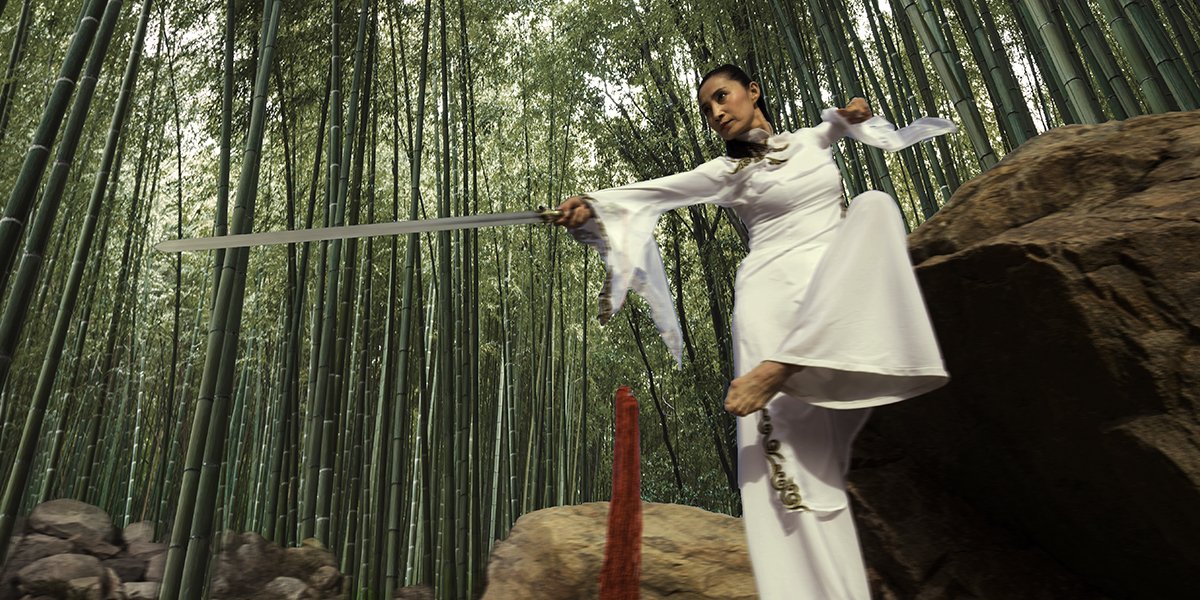Projector
Monitor
Lighting
Digital Display
Job References
This site uses cookies. By continuing to browse the site you are agreeing to our use of cookies, you can also manage preferences.
This site uses cookies. By continuing to browse the site you are agreeing to our use of cookies, you can also manage preferences.
Projector
Monitor
Lighting
Digital Display
Job References
Projector
Monitor
Lighting
Digital Display
Job References
Knowledge Center SupportMartial arts movies, especially in the wuxia genre, have become somewhat rare in the last two decades on the big screen, although still popular on TV in China and Taiwan among other places. Far from the heyday they experienced between the mid-1960s and the mid-1990s, or even from their brief but strong resurgence after the release of Crouching Tiger, Hidden Dragon at the turn of the millennium. And so it’s easy for younger viewers to almost forget that many important storytelling themes exist within the wuxia space, in a very similar vein to other heroic genres like westerns and medieval knight tales.
One of the most influential wuxia movies of all time is A Touch of Zen, or Xia Nu, meaning “woman knight” or “heroic woman”. Made between 1967 and 1970 by director King Hu with cinematography by Hua Hui Ying, A Touch of Zen stands as a classic of filmmaking in general and is widely considered a masterpiece. It went almost entirely missing for over 20 years until star Hsu Feng (who plays the titular heroic girl) paid out of her own pocket to restore the film and create a proper Blu-ray disc version, which came out in 2016. We recently re-watched A Touch of Zen, and wanted to recommend it to cinephiles, especially if on a big screen.

It’s important to go into A Touch of Zen knowing that it’s quite a commitment. First off, the movie as it exists now was originally made in two parts, and runs three hours. Then, keep in mind this isn’t a 1990s Hong Kong martial arts movie. It’s not fast paced, and the action is separated by long sections of dialogue or long nature shots. However, all of the fights in this classic were supremely choreographed by celebrated actor and fight coordinator Han Yingjie, who also worked with King Hu on earlier martial arts hit Dragon Inn.
A Touch of Zen was filmed in Taiwan, mostly in mountainous areas and forests. It’s a very artistic and introspective movie, with extended sections dedicated to nature, landscapes, and other scenes that seemingly have little to do with the story. If you want high octane action, this may not be your movie.
But if you’re a fan of masterful techniques of photography and realistic martial arts and swordplay, A Touch of Zen is definitely for you. Although interspersed, there’s plenty of action in addition to character building, but very little in the way of fancy wirework. King Hu preferred using trampolines to wires and also tended to portray martial arts in a more subdued way compared to many of his contemporaries.
Presumably taking place sometime in the 14th or 15th century during the height of the Ming dynasty, A Touch of Zen has a pretty standard or familiar plot, based on a story by 18th century writer and poet Pu Songling. The daughter of an honorable government official finds herself on the run from agents of a corrupt eunuch. Played by Taiwanese actress Hsu Feng, main character Yang Huizhen embodies all the traits of a heroic icon as she uses her superior fighting skills to try and survive. While strong female characters were hardly rare by the 1960s, especially in Chinese wuxia stories, A Touch of Zen still manages to make Yang a very complex character with many sides to her personality. She’s helped by several people, but especially Gu Sheng-Tsai (played by Shih Chun). Gu is also a very interesting character, starting off as a timid merchant and scholar, then evolving into a bold tactician as his involvement with Yang becomes ever more personal.
A Touch of Zen also deals with the corrupting nature of power, the influence of greed, the definition of loyalty and bravery, and becoming one with nature. King Hu himself was very much influenced by Buddhism, and A Touch of Zen reflects this start to finish.
The Blu-ray disc version of A Touch of Zen is far better than the streaming version found on apps such as MUBI. We watched it on a native 4K Blu-ray player with strong upscaling capabilities, and found the 1080p disc translated very well to 4K and looked superb. Of course, this is a restoration of an almost unwatchable master copy, so there are blemishes and issues with the image and sound quality. However, overall the digital restoration is excellent and the image upscales very well to 2160p.
The mountains and forests of central Taiwan as well as the town and fortress sets that were built in Taipei all look great, and while dialogue is clearly added-on, syncing isn’t an issue.
Portions of the movie do have “floater” artifacts that weren’t possible to remove without costly scene reconstruction, which would have had the side effect of undoing the film’s ethereal mood.
If you have any inclination towards action movies or are a student of cinema, you have to watch A Touch of Zen if you haven’t yet. While King Hu started out as a comedian and actor, he found greater success once he discovered his true calling as a director. A Touch of Zen is arguably his most impressive work, and went on to influence directors and cinematographers in many genres and all around the world. Thus, it should not be missed.
Thanks for your feedback!